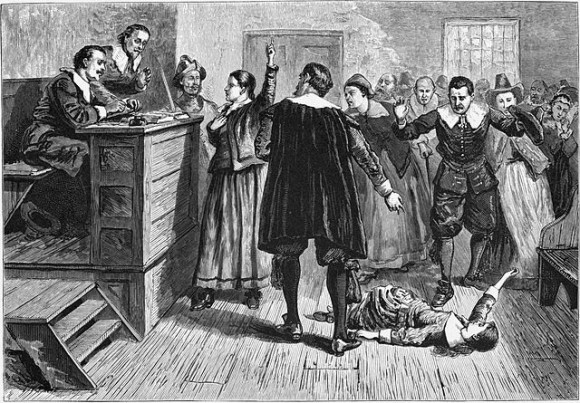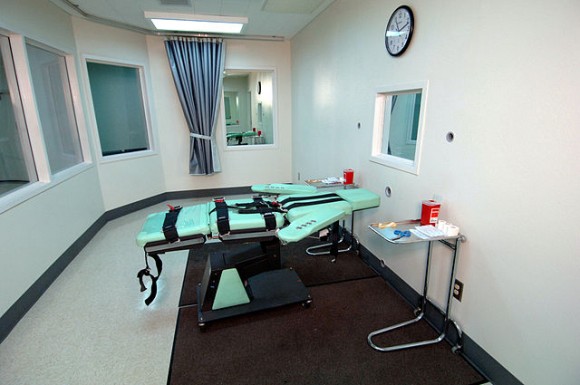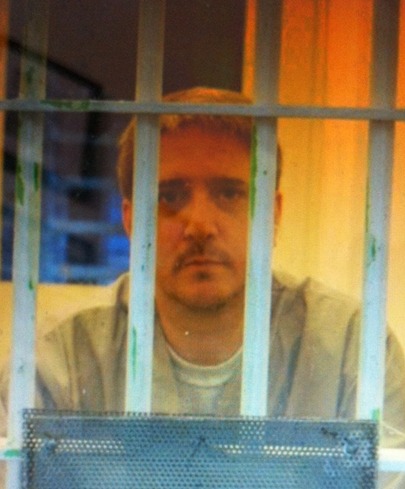OKLAHOMA CITY, Sept. 17. 2015 — In a cliffhanging, high-profile murder-for-hire death penalty case, Oklahoma Governor Mary Fallin has granted an eleventh-hour two-week stay of execution of condemned inmate Richard Glossip, 52, based upon his attorneys’ assertions that newly discovered evidence will prove Glossip’s actual innocence and exonerate him.
 The Oklahoma Court of Criminal Appeals (OCCA) agreed to the stay of execution only hours before the execution by lethal injection was scheduled to commence at 3 p.m. CST yesterday. The defense team, headed by renowned defense attorneys, moved to introduce newly discovered evidence of an affidavit from a cellmate of Glossip, inmate Michael Scott. Scott overheard the other man convicted in the case saying that “he set Richard Glossip up, and that Richard Glossip didn’t do anything.”
The Oklahoma Court of Criminal Appeals (OCCA) agreed to the stay of execution only hours before the execution by lethal injection was scheduled to commence at 3 p.m. CST yesterday. The defense team, headed by renowned defense attorneys, moved to introduce newly discovered evidence of an affidavit from a cellmate of Glossip, inmate Michael Scott. Scott overheard the other man convicted in the case saying that “he set Richard Glossip up, and that Richard Glossip didn’t do anything.”
In its Order to Stay Execution, the OCCA granted the temporary stay “due to Glossip’s last-minute filing and in order for this court to give fair consideration” to his claims and rescheduled his execution for Sept. 30, 2015.
After a jury trial, Glossip was convicted of the 1977 murder of his employer, motel owner Barry Van Treese, who was brutally beaten to death with a baseball bat at a Best Budget Inn in Oklahoma City. The evidence was undisputed that Glossip did not carry out the fatal beating of the bludgeoned victim, nor was Glossip present at the crime scene. The State prosecuted Glossip at trial based upon the testimony of the convicted killer, Justin Sneed, a 19-year-old drifter and known meth addict, who received a plea deal of life without parole in exchange for his trial testimony against Glossip.
Glossip’s current legal eagles, Don Knight of Colorado and Barry Scheck, who serves as co-founder of the Innocence Project, have meticulously pointed out the ineffectiveness of counsel in the previous two trials which found Glossip guilty. They accuse Sneed of malingering in his contradictory statements about whether Glossip had any connection with the murder. The defense team also refers to the damning account by Sneed’s own daughter that Sneed had acted alone, which is consistent with inmate Michael Scott’s account.
Anatomy of Litigation and Lethal Injection
The swirl of disturbing factual and procedural issues stewing in this internationally disputed case involves dubious evidence presented at the trial. Questionable actions include:
- A possible police-coached confession from Sneed shows a grand conspiratorial scheme to eliminate his boss, Van Treese, and the gruesome means of concealing the crime by chemically disintegrating the corpse with muriatic acid.
- The “sweetheart” plea deal with the actual killer, Sneed — who may have been motivated to frame Glossip due to drug-addled fears of his possible termination — as a driving factor to set up Glossip as the mastermind of a grandiose conspiracy which is consistent with accounts by the killer’s daughter and the inmate’s new affidavit.
- Prosecutorial misconduct due to the State’s suppression of exculpatory evidence.
- A box of physical evidence used in the first trial was destroyed in 1999 following the first trial, and just five days following the OCCA’s order to return the case to district court for an evidentiary hearing on claims of ineffective assistance of counsel and prosecutorial misconduct. The State stipulated in the second trial that no physical evidence connected Glossip to the crime scene — because the evidence had been destroyed only days before the evidentiary hearing was ordered by the OCCA on dispositive issues of guilt-innocence.
- Curiously, the crime lab stored the physical evidence of Sneed and Glossip at the home of police chemist, Joyce Gilchrist, who later supervised the DNA lab, and whose incompetent trial testimony misidentifying evidence resulted in overturning numerous convictions on appeal because of her perjury. Gilchrist was never charged with an offense of moral turpitude and passed away earlier this year.
- Some of the jurors in the first trial have since written to the Governor’s office “to humbly ask that [their support for a stay based upon new evidence not presented at trial] is taken into consideration regarding the execution.” However, the governor has declined to take those opinions into consideration because Glossip had “a second bite at the apple” at his second trial.
- The legal and moral concerns of the public administration of the death penalty in a sterile environment as unconstitutionally cruel and unusual in an advanced civilized society.
- The questionable use of an unreliable lethal cocktail, including the controversial sedative midazolam with middling effectiveness in rendering deep unconsciousness used in public Oklahoma executions, and a handful of other states, which happen to have the highest incarceration rates in penal institutions across the nation.
Given imposition of the death penalty in the Sooner State, Glossip’s case recalls the hideous execution by lethal injection of midazolam and other compounds into the “tricky” veins of a convicted Oklahoma killer who wreathed in agony for nearly 45 minutes before dying of a heart attack. This article in The Washington Post describes what it was like to watch the botched execution.
Governor Fallin issued the following statement, granting the emergency temporary reprieve in Glossip’s case on the day of the scheduled execution after the inmate had finished his final meal — chicken fried steak and a malt — and was prepared for his impending death:
As I have repeatedly said, court is the proper place for Richard Glossip and his legal team to argue the merits of his case. My office will respect whatever decision the court makes, as we have throughout this process.
My thoughts and prayers go out to the Van Treese family who has suffered greatly during this long ordeal.”
Salem Witch Trials, Procedural Errors and Moral Thought Leadership
This turn of events comes as no great surprise since earlier this year, Oklahoma Attorney General Scott Pruitt filed to stay the executions of three death row inmates, including Richard Glossip, during the pendency of appeals to the U.S. Supreme Court. The High Court bound the case over with a “strict scrutiny” review of the cases on the basis of Oklahoma’s lethal injection protocol due to the U.S. Constitution’s prohibition of cruel and unusual punishment.
 Last April, Oklahoma’s execution procedure drew blistering national headlines following the death of condemned inmate Clayton Lockett who wreathed in pain, gnashed his teeth and struggled against his restraints on the crucifix-style gurney following administration of compounds blended in a lethal cocktail that had never been used before. The cocktail included midazolam, which served as a sedative to ease the pain of death throes; vecuronium for respiratory arrest; and potassium chloride for cardiac arrest. After prison officials stopped the horribly botched execution, Locket eventually died from a heart attack over twenty minutes later.
Last April, Oklahoma’s execution procedure drew blistering national headlines following the death of condemned inmate Clayton Lockett who wreathed in pain, gnashed his teeth and struggled against his restraints on the crucifix-style gurney following administration of compounds blended in a lethal cocktail that had never been used before. The cocktail included midazolam, which served as a sedative to ease the pain of death throes; vecuronium for respiratory arrest; and potassium chloride for cardiac arrest. After prison officials stopped the horribly botched execution, Locket eventually died from a heart attack over twenty minutes later.
Although the 5-4 ruling in June, 2015 by a deeply-divided U.S. Supreme Court eventually allowed the execution to move forward, Justice Stephen Breyer expressed in the minority opinion his strong dissent, and was joined by Justice Ruth Bader on the following grounds:
- The evidence presented at trial against Glossip was insufficient.
- The death penalty protocol involving an ineffective sedative to induce deep unconsciousness is arbitrarily imposed against the condemned.
- The inordinate and unconscionable gap of time between the initial prosecution and the ultimate execution carried out perhaps decades later.
Nevertheless, the Supreme Court cleared the way for the executions because petitioners failed “to identify a known and available alternative method of execution that entails a lesser risk of pain.” For the majority, Justice Samuel Alito lambasted the dissenting opinion’s “outlandish rhetoric” and unfounded basis that the ruling is comparable to the infamous Salem Witch Trials in colonial Massachusetts, “allowing prisoners to be ‘drawn and quartered, slowly tortured to death, or actually burned at the stake.'”
Last week, Justice Breyer told CNN that:
[W]hat I wrote in the opinion — first to suggest sometimes its the wrong person. Second, if you look at who is actually executed it seems pretty arbitrary … Third, if you look at the average length of time it takes from the time a person is sentenced to death to the time of execution — 18 years now.”
Justice Breyer further commented that:
If you look at the number of executions, it’s fallen dramatically and they’re almost all in a handful of counties.”
Breyer has also observed that the constitutionality of the death sentence should be revisited as “the times have changed.” He also stated that lethal injection to carry out public executions “is not what people expected when [the Court] wrote the cases upholding the death penalty more than 40 years ago.”
Oklahoma Attorney General Scott Pruitt praised the Supreme Court’s decision that decided against Glossip and another two condemned petitioners in their failed appeal: “The families in these three cases have waited a combined 48 years for justice,” Pruitt announced in his terse statement in June 2015. Pruitt has expressed since the temporary stay of his confidence that the OCCA will allow Glossip’s execution to move forward later this month.
Too Little Too Late?
From the defense perspective, in a potentially serious case of prosecutorial misconduct of withholding exculpatory evidence, the State may have arguably crossed the line by suppressing the presentation of contradictory evidence of Sneed’s statement to police interrogators, who may also have coerced the confession. This could have influenced the outcome of the trial in the guilt-innocence stage.
 Such prosecutorial and police misconduct, if proven, could result in overturning Glossip’s conviction, calling to mind the infamous case of Rubin “Hurricane” Carter, a world champion boxer wrongfully convicted in a shady law enforcement system rank with institutional corruption. The story was later made into the acclaimed movie “The Hurricane.”
Such prosecutorial and police misconduct, if proven, could result in overturning Glossip’s conviction, calling to mind the infamous case of Rubin “Hurricane” Carter, a world champion boxer wrongfully convicted in a shady law enforcement system rank with institutional corruption. The story was later made into the acclaimed movie “The Hurricane.”
If the claim of improper suppression of evidence by the State proves to be true, those same prosecutors may face possible attorney discipline, including, but not limited to, suspension or disbarment. If Glossip is exonerated upon finding of actual or procedural innocence in state court or federal habeas corpus proceedings, pursuant to the Antiterrorism and Effective Death Penalty Act of 1996 (AEDPA), Glossip may be entitled to sue the government for damages for his wrongful incarceration pursuant to state statute upwards to $175,000.
Glossip’s prayer partner, Sister Helen Prejean, who serves as minister to prisoners on death row at the maximum-security McAlester State Penitentiary (where “Old Sparky” and other forms of historical execution, including a hangman’s noose, are displayed for visitors’ prison tours) originally petitioned the court system to show that Glossip is factually and legally innocent of the crime of murder in the killing. Sister Helen was portrayed by Susan Sarandon in “Dead Man Walking.” Due to Sister Prejean’s salvationist efforts, Sarandon and other Hollywood stars rallied international attention in support of the stay and created a petition on MoveOn.org, which has more than 236,000 signatures.
Will Justice Be Served?
 Glossip’s scheduled execution would have been the first in Oklahoma since the Supreme Court allowed the use of the drug midazolam in June. The Supreme Court and state investigation concluded that the IV lines were improperly inserted and the adverse reaction was not due to the volatile sedative. Meanwhile, the State has not changed its protocol of the controversial three-drug formula, which uses midazolam, which has been considered ineffective to induce deep unconsciousness sufficient to avoid the agony of death throes as the other compounds stop breathing and arrest the heartbeat. In fact, it has planned to increase the dosage of misazolam from 100 milligrams to 500 milligrams.
Glossip’s scheduled execution would have been the first in Oklahoma since the Supreme Court allowed the use of the drug midazolam in June. The Supreme Court and state investigation concluded that the IV lines were improperly inserted and the adverse reaction was not due to the volatile sedative. Meanwhile, the State has not changed its protocol of the controversial three-drug formula, which uses midazolam, which has been considered ineffective to induce deep unconsciousness sufficient to avoid the agony of death throes as the other compounds stop breathing and arrest the heartbeat. In fact, it has planned to increase the dosage of misazolam from 100 milligrams to 500 milligrams.
Oklahoma will use nitrogen gas if lethal injection is unavailable. According to one account in the botched Lockett execution, one guard remarked whether Lockett should be shot in the head to take the inmate out of his misery.
U.S. Sen. Tom Coburn (R-Okla.), former University of Oklahoma football coach Barry Switzer and Scheck signed a letter published last week that called on Fallin to”prevent a deadly mistake” and stay the execution.
“We also don’t know for sure whether Richard Glossip is innocent or guilty,” they wrote in the letter. “That is precisely the problem.”
In a phone interview with CNN earlier this year, after serving 17 years behind bars, Glossip said he was mortified that he may be punished by death for a crime that he didn’t commit. He stated:
“I am worried they will botch it again.”
At first I was angry at Justin [Sneed], but now I feel sorry for him … He’s afraid of how Oklahoma will kill him if he owns up to what really happened, just like I am afraid of how they’ll kill me.”
In the end, however the story plays out — whether execution or exoneration — the residual question will remain: Has justice been served?
Editorial Note: The author of this article previously served as a murder prosecutor for the State of Oklahoma in state and federal courts and subsequently volunteered his legal services years later to the Oklahoma Innocence Project.
For aNewDomain, I’m Jim Kelly.
Images in order: Execution Room in San Quentin via Wikimedia Commons; Richard Glossip courtesy RichardGlossip.com; Salem Witch Trials via Wikimedia Commons; Midazolam via Wikimedia Commons













